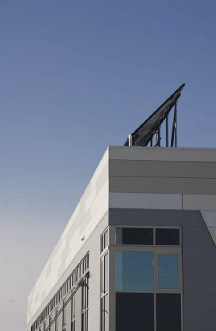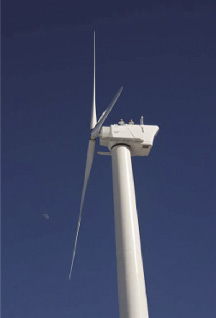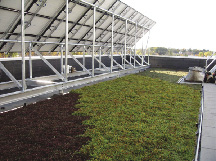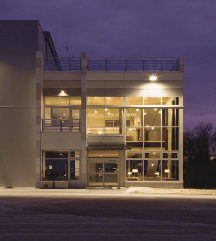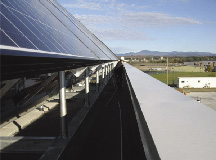TruexCullins Architecture and Interior Design's Heritage Aviation facility at the Burlington International Airport has achieved LEED Gold Certification from the U.S. Green Building Council (USGBC). Engelberth Construction served as the construction manager for the project.
This major renovation and building addition project for Heritage Aviation started with the complete reconstruction of a vacated 1954 hangar. The original structure was formerly occupied by the Vermont National Guard and has since been repurposed and transformed into an aviation services facility totaling 75,800 s/f
Aviation is an energy-intensive industry, accounting for 3% of global carbon emissions. The Heritage Aviation facility has taken extraordinary measures to counteract this impact and promote a sustainable model for the industry. Some of the most notable environmental accomplishments of the building include these features:
* Through the use of multiple on-site renewable energy sources, Heritage Aviation is generating 15% of their energy needs, saving 200 kW Hours per 10-hour daytime shift every day. The majority of this energy is produced by a 100 kW commercial wind turbine mounted at the southeast corner of the parking lot. This FAA-approved wind turbine was the first community-scaled wind turbine installed at a regional airport in the United States.
* An additional 3.4% of the project's energy needs are met with a roof-mounted, 10-panel 65.2 MBtu solar thermal domestic hot water system and an adjacent 120-panel 25.2 kW solar photovoltaic array.
* The building features a 13,742 s/f "green" roof, with several varieties of sedum planted in a waving pattern as seen from the air. The vegetated roof retains the first 1" of rainfall that falls on it, with the excess directed toward underground irrigation tanks. When installed, this was the largest green roof in New England, and remains the largest in Vermont.
* The south parking lot features a porous concrete surface that is designed to absorb all rainfall based on a 100 year storm, eliminating the erosion and polluting affects typically caused by excess stormwater runoff. At 87,117 s/f, this is the largest pervious parking lot in Vermont, and one of the largest in New England.
"We're fortunate to be part of an excellent team of architects, engineers, contractors and a supportive owner willing to be on the edge of energy efficiency, promoting corporate responsibility and environmental stewardship," John Higgins, PE, principal engineer, Artisan Engineering.
A building energy model was used to compute the projected energy savings from the efficiency improvements to the building shell, the mechanical and electrical loads, and the power generated by on-site renewable energy sources. According to this model, the Heritage Aviation facility is realizing a 38% energy savings over a standard commercial building of the same size.
Actual data from the first year of operation indicates even better energy performance. The facility has now been in operation since January 2010, and during this time, the building has seen a savings in gas and electricity consumption of 54% over a conventional office/warehouse building.
About LEED:
The LEED green building certification system is the preeminent program for rating the design, construction and operation of green buildings. LEED is a program of the Washington, D.C.-based U.S. Green Building Council (USGBC), a 501 c3 non-profit organization committed to a prosperous and sustainable future for our nation through cost-efficient and energy-saving green buildings.







